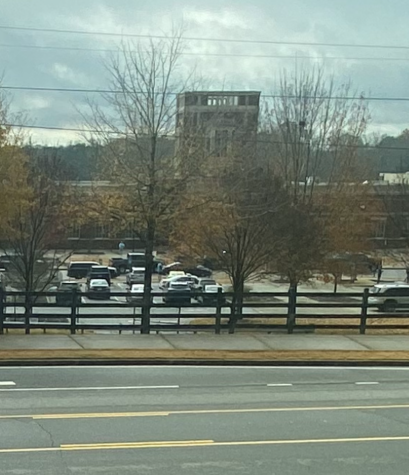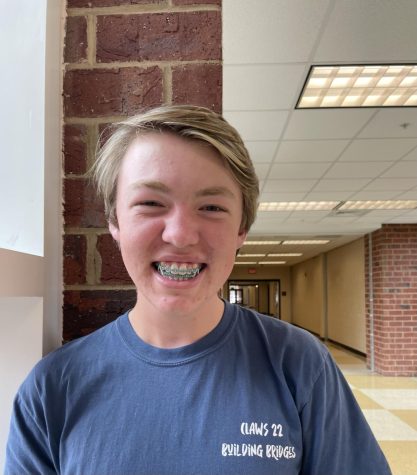What Cambridge Learned from Its Swatting Incident
January 6, 2023
Cambridge was a victim of an ongoing domestic terrorism threat known as “swatting,” when a person falsely reports violence to evoke the response of a SWAT team.
Milton police received a call from a person claiming to be a Cambridge teacher on Nov. 30 who said shots had been fired inside the building. Police across Georgia had been notified that swatting incidents were occurring at high schools around the state.
Regardless, Milton police responded promptly, and Principal Ashley Agans decided to go into hard lockdown.
“I knew it was a swatting event. But at the same time in the back of my head, I’m responsible for 1,761 children. And all of their parents are trusting me, not to mention the 160 staff members and teachers,” said Agans.
“So, I’m still going to follow what I would do to make sure everybody was safe.”
While this event frightened many students, staff and parents, Agans said it exposed issues that need to be resolved to protect students and staff in a hard lockdown.
First, Agans said there was a lack of communication in the moment. Many teachers who gave her feedback said they were unaware the hard lockdown was not a drill.
Agans said even during a drill, protocol still must be followed. She also said there has been discussion of developing a code word to signify an imminent danger because students and teachers associate the words “drill” and “lockdown” with simulations rather than the real thing.
Campus Security Associate Daniel Simmons, who had only worked at Cambridge for five days before Nov. 30, said complacency during drills will “lead to a road we wouldn’t want” to go down. He said he will always follow what procedures call for him to do.
Moreover, Agans said knowing what she knows now, she most likely would have used the lockdown announcement to inform students and staff that the Milton police had received a call so that everyone would have had a little peace of mind.
“Because, when you don’t know what’s going on, it all cycles through your head,” Agans said.
Additionally, there is an app called CrisisGo that Fulton County utilizes that allows Agans to simply push a button that sends an alert to all teachers in the occurrence of a safety threat.
There is an option for her to type notes and while she typed that they believed it was a hoax and that everyone was safe, teachers heard the app’s signature alarm and did not read the notes, which she said is the correct course of action.
“I feel like I communicated as best I could, but the reality is, when CrisisGo goes off, it’s like a hurricane siren,” she said.

In the communication realm, Agans said there are door numbers on each outside door so police can know which door to enter in case there is a situation in a specific area of the school.
However, she said she is also considering placing door numbers on the inside of entrance and exit doors to help police orient themselves inside the building.
In addition, she said she wants to set up a communication chain so each teacher can check in with her on what is happening in their classroom so police would know which classrooms need to be checked first.
Agans said drills will be conducted at lunchtime because she said students had questions of where they would go if they were not in a classroom, especially in the cafeteria or courtyard.
Additionally, she said some students try to return to their rooms if they happen to be in a hallway or bathroom when a hard lockdown is announced; however, she said the best thing to do is to lock themselves in a stall.
Furthermore, Agans said 85 students checked out properly following the incident. However, an additional 321 students just left the building.
She said a process must be developed where students cannot exit the school without being accounted for.
Another gap that this matter uncovered is what protocol should be followed in the veterinarian science building, which lies at the back of the school’s rear parking lot.
“This situation really brought to light what I don’t think we all recognized was the problem in a hard lockdown in the vet building,” Principal Ashley Agans said.
Veterinarian Science teacher Sara Reeves said she, the other agriculture teacher and the students filed into the building’s bathroom.
While the building is locked, the bathroom does not have a lock so that no one can get trapped in there. Because of this, Reeves and the other vet teacher, Ginger Jarjoura, stood against the door to protect the students.
During this time, she said the door suddenly began opening.
“My fellow ag teacher, Ms. Jay, she, and I were standing against the door, and it was pushed trying to open and first thought is, ‘Ok well I’m the adult, I’m the person responsible for the safety of the students, so what do I do? I make sure the door stays closed,’ ” Reeves said.
The people at the door announced themselves as the police; however, Reeves said she experienced a split second of being hesitant over the validity of the statement.
She said she thought about how all their exterior doors were locked and if someone with ill intent had gotten in the building, they would have heard broken glass, but they had not heard anything.
“They have a key; we just didn’t hear the door open and close and so it was just a shock when the door started to open,” Reeves said.
She said they opened the door to find the police but that, “I think the worst part was knowing how scared the students were.”
Nevertheless, Reeves said her students were brave and respectful for the entirety of the debacle.
She said that the school resource officer has already visited the building to examine every “nook and cranny” of the space to evaluate where the best hiding space would be.
“I just want to emphasize that I am very thankful and have a lot of confidence in the ability of our admin and our local law enforcement to keep the students here safe,” Reeves said.
